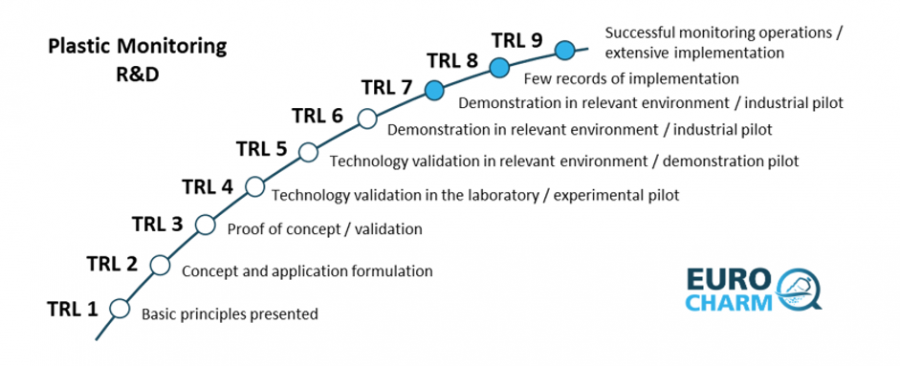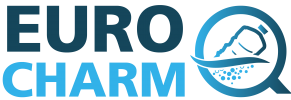Activity | Project news Systematic literature review completed
On April 21st, EUROqCHARM experts presented the results of their review of methods and protocols for the analysis of nano-, micro-, and macro-plastic in different environmental matrices. Our audience included members of the EUROqCHARM stakeholder network representing researchers and academia, analytical instrument makers and laboratories, standardisation institutions and working groups, environmental agencies and ministries, and international governmental bodies. This systematic review aimed to identify state-of-the-art procedures for survey design, sample collection, sample preparation, analysis and reporting results of plastic concentration in environmental samples in order to define matrix- and size- adapted methods. The identified procedures were divided into Reproducible Analytical Pipelines (RAPs) and were critically revised using Technological Readiness Level (TRL) assessments and SWOT analysis.

Building harmonisation
Generally, the process confirmed that there is a lot of work to be done in terms of harmonisation with regard to terminology, methodology and reporting. The data gathered in the literature review, however, form a solid basis to build that harmonisation on.
For some matrices and plastic size classes, it is clear that international harmonisation will be a huge endeavor. For nanoplastics for example, there is a lack of studies and data throughout all matrixes, so moving on from research case studies to monitoring will require a lot of time and effort. Similarly, the harmonised quantification of plastic pollution in the air is still a quite distant dream. Scientists working on microplastics in birds however, will be happy to hear that their RAP’s are already quite well aligned, and there is a high technical readiness. In that case, the harmonisation could be achieved quite soon.
Comments, questions, suggestions, needs
In the stakeholder group, there was a lot of enthusiasm about the results (“The results on TRL are fantastic!”), but also a lot of anticipation (read: impatience) to get on with the harmonisation process. Stakeholders are eager to see gap analyses, reproducibility testing, technical recommendations and a decision support tool. But there are worries as well: “What if the EUROqCHARM results will cause scientists to drift to other methods, how will that affect comparability with older data?” and “What if a method with a high TRL is not suited to study microplastic pollution impact?”
Stakeholder activity was further promoted by using the online platform Padlet, on which participants could post comments to the presentation of results and ask questions. All comments and questions were carefully considered, and a thorough answer was formulated. On April 22nd, these were presented and discussed in Q&A sessions per matrix (water, air, biota, sediments).

Work package leader Stefano Aliani: “It was interesting to listen to all Q&A sessions per compartment. There were a lot of new ideas, and possible impact of our work popped up.”
Support base and targeted progress
With more than 80 stakeholders from around the globe following the stakeholder webinar and Q&A sessions, the discussions were lively, and the researchers were delighted with the input. So: a big thank you to participants!
The next step is to feed the results and stakeholder input into the other project activities: the most promising methods will be suggested for validation and quality control (WP2) or direct implementation (WP3).
In the interim, the researchers involved in the critical assessments of method will be working hard on formulating manuscripts for publication.
